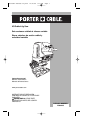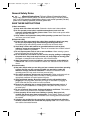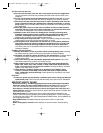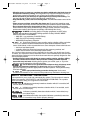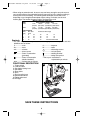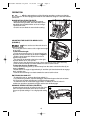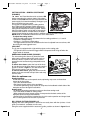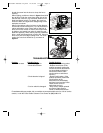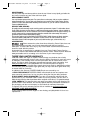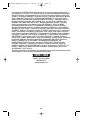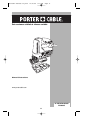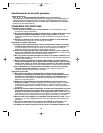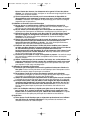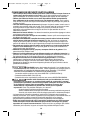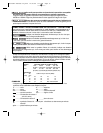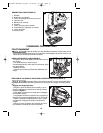
7
CUTTING ACTION – ORBITAL OR STRAIGHT
(FIGURE E)
Check that the tool is not locked ON
before connecting it to a power supply. If the trigger
switch is locked ON when the tool is connected to the
power supply, it will start immediately. Damage to your
tool or personal injury may result.
This jig saw is equipped with four cutting actions,
three orbital and one straight. Orbital action has a
more aggressive blade motion and is designed for
cutting in soft materials like wood or plastic. Orbital
action provides a faster cut, but with a less smooth
cut across the material. In orbital action, the blade
moves forward during the cutting stroke in addition to the up and down motion.
NOTE: Metal or hardwoods should never be cut in orbital action.
To adjust the cutting action:
- Move the cutting action lever (9) between the four cutting positions: 0, 1, 2, and 3.
- Position 0 is straight cutting.
- Positions 1, 2, and 3 are orbital cutting.
- The aggressiveness of the cut increases as the lever is adjusted from one to three, with
three being the most aggressive cut.
LED LIGHT
The jig saw is equipped with a light which projects on the cutting path.
- The light will come on when the trigger switch is depressed and will go off when the
trigger switch is released.
REMOVABLE SHOE SLEEVE (FIGURE F)
The non-marring shoe sleeve (5) should be used
when cutting surfaces that scratch easily, such as
laminate, veneer, or paint. It can also be used to
protect the shoe surface during transportation and
storage.
To attach shoe sleeve, place the front of the shoe
(6) into the front of the shoe sleeve (5) and lower the
jig saw as shown in figure F. The shoe sleeve will
click securely onto the rear of the shoe.
To remove shoe sleeve, grasp the sleeve from the
bottom at the two rear tabs and pull down and away
from the shoe.
Hints for optimum use
Sawing laminates
As the saw blade cuts on the upward stroke, splintering may occur on the surface
closest to the shoe plate.
- Use a fine-tooth saw blade.
- Saw from the back surface of the workpiece.
- To minimize splintering, clamp a piece of scrap wood or hardboard to both sides of the
workpiece and saw through this sandwich.
Sawing metal
- Be aware that sawing metal takes much more time than sawing wood.
- Use a saw blade suitable for sawing metal.
- When cutting thin metal, clamp a piece of scrap wood to the back surface of the
workpiece and cut through this sandwich.
- Spread a film of oil along the intended line of cut for easier operation and longer blade
life. For cutting aluminum, kerosene is preferred.
RIP / CIRCLE CUTTING (FIGURE G, H)
Ripping and circle cutting without a pencil line are easily done with the rip fence / circle
guide (not included - available at extra cost).
Using the screw supplied with the accessory guide, position as shown in figure G and
E
:
F
90546382 PC600JS Jig Saw 12/10/08 9:11 AM Page 7



